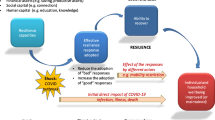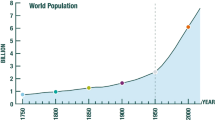Abstract
The main purpose of this study is to assess economic vulnerability of small island development regions as part of their sustainability constraints. By combining economic and environmental time series data, we assessed a composite index of economic vulnerability which is constructed from three exogenous variables, namely economic exposure, economic remoteness, and economic impact of environmental and natural disasters. We used the Amami Islands, Kagoshima Prefecture, Japan as the case studies for this paper.
The results indicated that using a gross island products based valuation index, Kikaijima is the most vulnerable island in the Amami Islands with a composite economic vulnerability index (CEVI) value of 0.678, while by using a per capita based index, Okinoerabujima is considered the most vulnerable island with a CEVI value of 0.680. From the results we also revealed that smaller islands have relative higher vulnerability than the bigger one, which also confirms some previous country-level vulnerability studies.
However, it is matter of fact that some islands that have relatively high vulnerability also have good economic performance as shown by their per capita income. In this regard, it can be argued that the success of these small islands could have been achieved in spite of and not because of their inherent vulnerability conditions as an indicator of sustainability constraint. Regarding these findings, we also examined a comparison between vulnerability results and the preliminary concept of an island's resilience in order to capture another perspective on sustainability assessment in a small island region.
Similar content being viewed by others
References
Adger, W.N. and Grohs, F.: 1994, 'Aggregate estimate of environmental degradation for Zimbabwe', Ecological Economics 11(2), 93–104.
Adger, W.N.: 1995, 'Compliance with the climate change convention', Atmospheric Environment 29(16), 1905–1915.
Akiyama, T.: 1999, Surviving in the 21st Century: The Present Situation of Remote Island and New Regional Development, Available online at http://www.geic.or.jp/islands/docs/akiyama.html, Accessed in 14 May, 1999
Aoyama, T.: (ed.): 2001, Beyond Satsuma: Satsunan Islands Accepting the 21st Century Challenge, Kagoshima University Research Center for the Pacific Islands, Kagoshima, Japan.
Atkinson, G., Dubourg, R., Hamilton, K., Munasinghe, M., Pearce, D. and Young, C.: 1997, Measuring Sustainable Development: Macroeconomics and the Environment, Edward-Elgar Publisher, Cheltenham, UK.
Beller, W.: 1990, 'How to sustain a small islands', in W. Beller, P. d'Ayala and P. Hein, (eds.), Sustainable Development and Environmental Management of Small Islands, The Parthenon Publishing Group, Paris, France, New Jersey, USA, pp. 15–22.
Beller, W., d'Ayala, P. and Hein, P. (eds.): 1990, Sustainable Development and Environmental Management of Small Islands, The Parthenon Publishing Group, Paris, France, New Jersey, USA.
Bohle, H.G., Downing, T.E. and Watts, M.J.: 1994, 'Climate change and social vulnerability', Global Environmental Changes 4(1), 37–48.
Briguglio, L.: 1995, 'Small island developing states and their economic vulnerabilities', World Development 23(9), 1615–1632.
Briguglio, L.: 2000, An Economic Vulnerability Index and Small Island Developing States: Recent Literatures. Working Paper, Kagoshima University Pacific Islands Studies Center. Kagoshima, November 29, 2000.
Brookfield, H.C.: 1990. 'An approach to islands', in W. Beller, P. d'Ayala and P. Hein (eds.), Sustainable Development and Environmental Management of Small Islands, The Parthenon Publishing Group. Paris, France, New Jersey, USA, pp. 23–34.
Carpenter, S., Brock,W. and Hanson, P.: 1999, 'Ecological and social dynamics in simple models of ecosystem management', Conservation Ecology 3(2), 4 (online, URL: http://www.consecol.org/vol3/iss2/art4).
Center for Global Environmental Research (CGER): 1996, Data Book of Sea Level Rise, National Institute for Environmental Studies, Environment Agency of Japan, Tsukuba, Japan.
Chander, R.: 1999, Measurement of the Vulnerability of Small States, Report prepared for the Commonwealth Commission, Available online at http://www.unep.ch/islands/d98-vul.htm, Accessed in 20 June, 1999.
Cross, M. and Nutley, S.: 1999, 'Insularity and accessibility: the small island communities ofWestern Ireland', Journal of Rural Studies 15(3), 317–330.
Conley, T. and Ligon, E.: 1998, Economic Distance, Spillover, and Cross Country Comparisons, Working Paper, Department of Agricultural and Resources Economics, Division of Agriculture and Natural Resources, University of California at Berkeley, USA.
Debance, K.S.: 1999, The Challenges of Sustainable Management for Small Island. [online], Available online at http://www.insula.org/islands/small-islands.html, Accessed in 25 May, 1999.
Dow, K. and Cutter, S.L.: 2000, 'Public orders and personal opinions: household strategies for hurricane risk assessment', Environmental Hazard 2(4), 143–155.
Edwards, S.F.: 1987, An Introduction to Coastal Zone Economics: Concepts, Methods, and Case Studies, Taylor and Francis Publishers, New York, USA.
Hasegawa, H.: 2000, Turning Point for Island Policies?: Comparative Case Studies Between EU and Japan, Working Paper, International Small Islands Studies Association, Islands of the World VI Conference, Isle of Skye, 16-20 October, 2000.
Hein, P.L.: 1990, 'Economic problems and prospects of small islands', in W. Beller, P. d'Ayala and P. Hein (eds.), Sustainable Development and Environmental Management of Small Islands, The Parthenon Publishing Group, Paris, France, New Jersey, USA, pp. 35–44.
Hollling, C.S.: 1973, 'Resilience and stability of ecological systems', Annual Review of Ecological Systems 4, 1–24.
Kagoshima Prefecture: 1988-2000, Statistics of Amami Islands, Kagoshima Prefecture Office, Kagoshima, Japan.
Katz, A.D.: 1982, Econometric Theory and Applications, Prentice-Hall, Inc., New Jersey, USA.
Lonergan, S. and Kavaragh, B.: 1991, 'Climate change, water resources and security in the Middle East', Global Environmental Changes 1(4), 272–290.
Matsui, T., Isobe, M., Watanabe, A. and Mimura, N.: 1995, 'Assessment of socio economic impacts of sea level rise in coastal zone in Japan', Journal of Japan Association of Coastal Zone Studies 5, 1–11 (in Japanese).
McLean, R.F.: 1980, 'Spatial and temporal viability of external physical control in small island ecosystems', in H.C. Brookfield (ed.), Population-Environment Relations in Tropical Islands: The Case of Eastern Fiji, Unesco Press, Paris, France.
Nijkamp, P. and Vreeker, R.: 2000, 'Sustainability assessment of development scenarios: methodology and application to Thailand', Ecological Economics 33, 7–27.
National Institute for Japanese Islands (NIJI): 1996, The Hand Book for Small Island Development, The National Institute for Japanese Islands, Tokyo, Japan (in Japanese).
National Institute for Japanese Islands (NIJI): 2000, The Annual Statistics of Japanese Islands. The National Institute for Japanese Islands, Tokyo, Japan (in Japanese).
Ortiz, C.A.C.: 1994, 'Sea level rise and its impact on Bangladesh', Ocean and Coastal Management 23(3), 249–270.
Perrings, C.: 1998, 'Resilience in the dynamics of economy-environment systems', Environmental and Resource Economics 11(3-4), 503–520.
Reggiani, A., de Graaff, T. and Nijkamp, P.: 2001, Resilience: An Evolutionary Approach to Spatial Economic System, Discussion Paper, Tinbergen Institute, The Netherlands.
United Nations, 1999: Progress in the Implementation of the Program of Action for Sustainable Development of Small Island Developing States: Climate and Sea Level Rise. UN Economic and Social Council, Report for the General Secretary.
Vreeker, R., Nijkamp, P. and Ter Welle, C.: 2000, A Multicriteria Decision Support Methodology for Evaluating Airport Expansion Plans, Working Paper, The Tinbergen Institute, The Netherlands.
Walker, B., Carpenter, S., Anderies, J., Abel, N., Cumming, G., Janssen, M., Lebel, L., Norberg, J., Peterson, G.D. and Pritchard, R.: 2002, 'Resilience management in social-ecological systems: a working hypothesis for a participatory approach', Conservation Ecology 6(1), 14 (online, URL: http://www.consecol.org/vol6/iss1/art14).
Wells, J.: 1996, Composite Vulnerability Index: A Preliminary Report, Commonwealth Secretariat, London, UK.
Wells, J.: 1997, Composite Vulnerability Index: A Revised Report, Commonwealth Secretariat, London, UK.
Author information
Authors and Affiliations
Rights and permissions
About this article
Cite this article
Adrianto, L., Matsuda, Y. Study on Assessing Economic Vulnerability of Small Island Regions. Environment, Development and Sustainability 6, 317–336 (2004). https://doi.org/10.1023/B:ENVI.0000029902.39214.d0
Issue Date:
DOI: https://doi.org/10.1023/B:ENVI.0000029902.39214.d0




